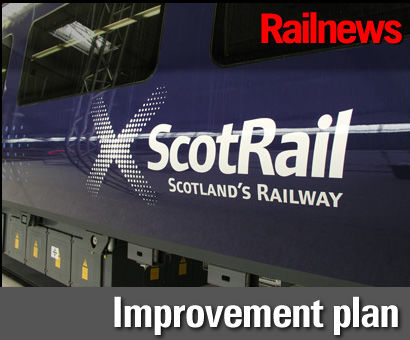THE ScotRail Alliance has unveiled a plan to improve performance, after managing director Phil Verster had described the task of upgrading the network while running trains day-to-day as like ‘performing open heart surgery while doing a marathon’.
Public criticism has been mounting: a petition calling for Abellio to lose its franchise has attracted more than 14,000 signatures, while there have also been questions in the Scottish Parliament.
The improvement plan includes £8 million for asset improvements, ‘specifically tailored’ upgrades for key parts of the network such as Edinburgh and the Borders, Lanarkshire and Tayside, and targeted work on rolling stock to deal with the most common faults.
‘Golden Trains’ – those services which, if they run late, are most likely to cause further delays to other trains – will be monitored and protected, while staff rostering and train diagramming will also be overhauled.
Meanwhile Phil Verster told a fringe event at the SNP conference: “When a railway gets really, really busy, we get trains delayed because there are so many people trying to get on a train, so many people trying to get off. So the journey gets longer and it’s less punctual.”
Abellio said: “We are committed to investing in Scotland and its railway. Under our stewardship, ScotRail has embarked on the biggest improvement and investment programme in the history of Scotland’s railway. This will mean more seats, shorter journeys, smart ticketing, improved WiFi and better stations.”
ScotRail Alliance infrastructure director David Dickson said: “We are not a just a company made up of metal boxes, wooden sleepers or concrete buildings. We have 7,500 people working for us – and every single one of them is dedicated to doing the very best for our customers.
“Our railway is undergoing the biggest period of change and modernisation since the Victorian era. Over the course of the next year or so we will be completing huge projects to upgrade our infrastructure, electrifying large parts of the network and introducing new fleets.”


